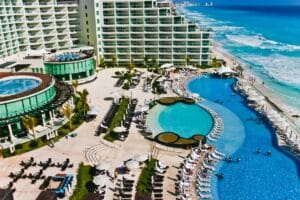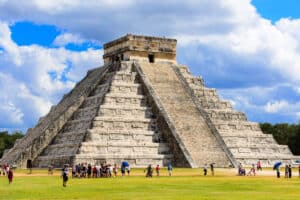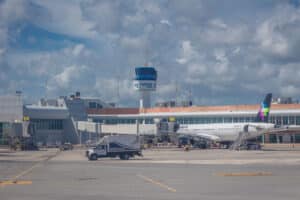When planning a vacation, safety is a top concern for any traveler.
So let’s get right to the point: Acapulco isn’t safe. In fact, it’s one of the most dangerous cities in Mexico.
One of the main reasons for Acapulco’s reputation as a dangerous city is that the city is dominated by cartels and the illegal activity typically associated with them.
Due to the city’s location along major Mexican trafficking routes violent crime and territory disputes between rival cartels occur often.
As a result, the U.S. government has issued a travel advisory not to travel to this country.
Let’s dive deep into Acapulco’s underbelly including its crime rates and homicide statistics. We’ll also share the current situation regarding the COVID-19 pandemic, the issue of carbon monoxide poisoning, natural disasters, beach pollution, etc.
Here’s all you need to know about Acapulco safety in 2024.
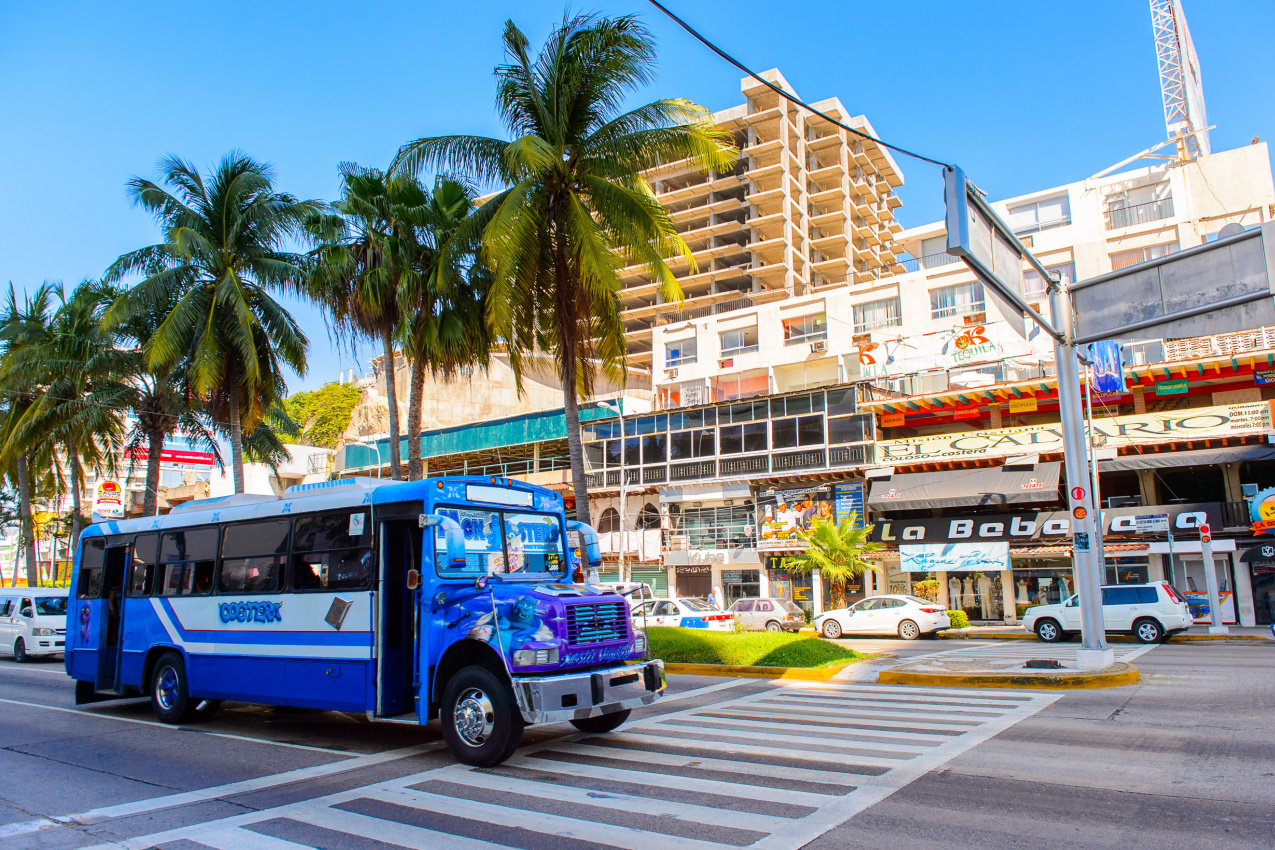
Are you planning a last minute trip to Acapulco? We’ve put together all the resources you’ll need for a fun & safe travel:
🛌 Best & Safest Places to Stay in Acapulco:
👉 Hotel Posada del Hidalgol – Outdoor swimming pool, Bar, Free Parking
👉 La Casa de los Patios Hotel – Spa and wellness centre, Family rooms, Restaurant
👉 Hotel Hacienda Vista Hermosa – Facilities for disabled guests, Free WiFi, Bar
👉 Hotel Mio Vallarta – Outdoor swimming pool, Free WiFi, Non-smoking rooms
⛱️ Fun Activities & Tours in Acapulco:
👉 Teotihuacan, Guadalupe Shrine, Tlatelolco & Tequila Tasting Tour
👉 Hot Air Balloon Flight
👉 Historic Downtown Tour
🚗 Best & Safest Acapulco Transportation Services:
👉 Airport Pickup Service – Welcome Pickups
👉 Rent a Car – DiscoverCars
🙏 Stay Safe While Travelling:
👉 Safetywing (for medical insurance)
👉 VisitorsCoverage (for trip insurance)
Unveiling the Reality: A Comprehensive Look at Acapulco Crime Rates
Acapulco sits in the Mexican state of Guerrero. When you see images of the city, it looks too beautiful to be put into words — as a masterpiece plucked from the head of a painter. This beauty has made it a very attractive destination for travelers from all around the world, and it’s also popped up in cinema and pop culture.
Did you know that Acapulco was the scene for one of Elvis Presley’s films, as well as John and Jacqueline Kennedy’s honeymoon spot?
Yes, Acapulco is very enchanting. Its lofty mountain peaks and lovely seashore have always been on the bucket list of celebrities and tourists alike.
The splendor of Acapulco, however, changed for the worse when cartels started to rule the city’s underworld. Acapulco currently ranks as one of the world’s 50 most dangerous cities, with more than 20 cartels ruling its streets.
The United States has issued a level 4 travel warning for Acapulco, which is “Do Not Travel.” This is the highest warning level and applies to countries with life-threatening dangers. If tourists disregard the warning and travel to Acapulco, the U.S. government will have little to no capacity to protect them.
Acapulco Crime Rates
Acapulco has a crime index of 60.52% out of 120%, which is pretty high.
As of 2023, Acapulco is the 18th most dangerous city in the world. The top three spots are all Mexican cities, the first one is Celaya, the second one is Tijuana (105.15), and the third is Juarez.
The cause for violence in Acapulco is the territorial disputes between the cartels over the Guerrero opioid trade, which is substantially financed by the US illegal drug market. “Here, who governs are the cartels, gangs, hit men, and extortionists,” an Acapulco civilian noted in the PBS TV news broadcast.
Navigating the New Normal: Ensuring COVID-19 Safety in Acapulco
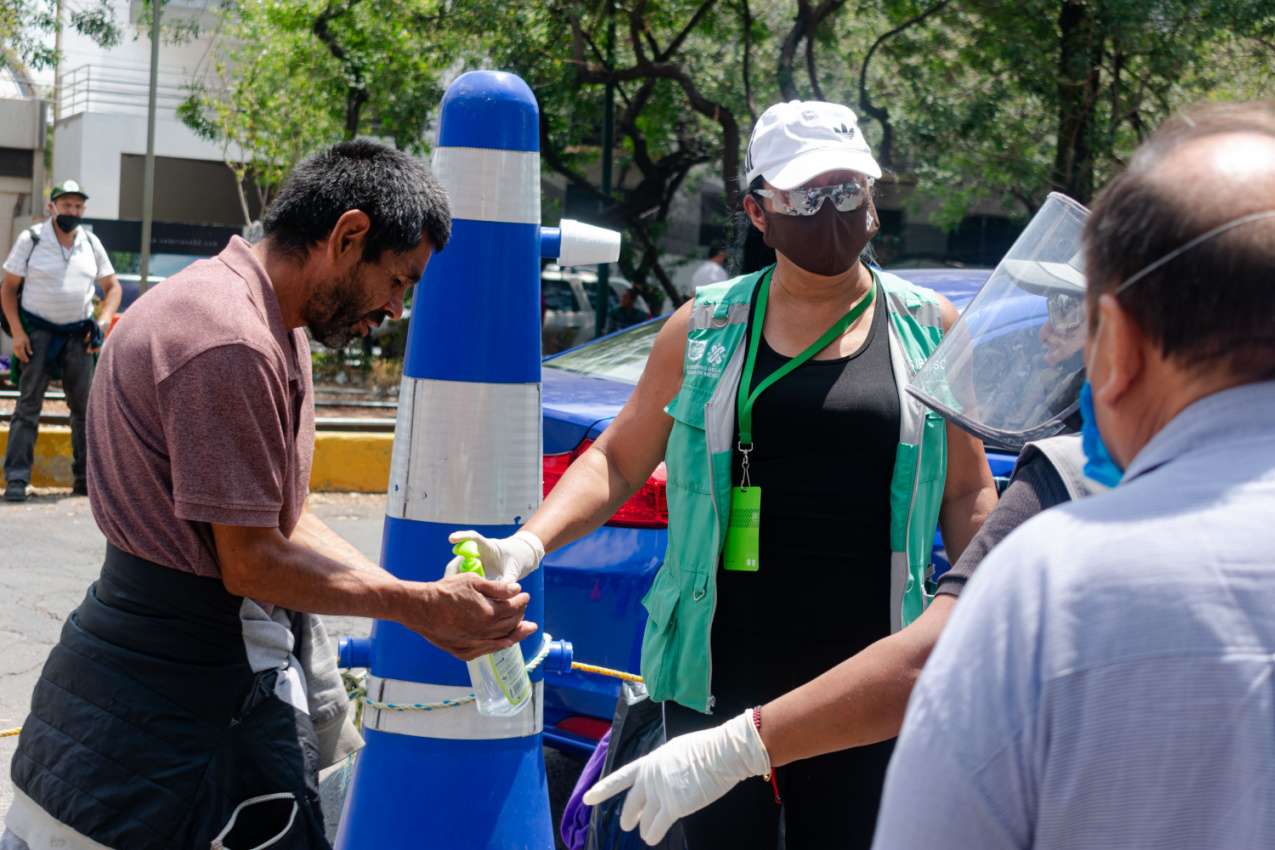
Acapulco doesn’t require testing or COVID-19 vaccines upon entrance.
However, no journey is risk-free during the pandemic. Authorities may implement restrictions at any time. Passengers’ temperatures may be tested upon arrival in Acapulco and transferred to a healthcare facility if they’re showing symptoms.
The symptoms of coronavirus include shortness of breath, temperature, frequent coughing, fever or chills, fatigue, muscle pain, headache, and loss of taste and smell, among others.
In Mexico, private PCR testing costs between 950 and 4500 MXN ($53 and $250), while viral antigen testing costs between 200 and 1000 MXN ($11 and $55). The results arrive through text message or email.
Avoid close contact with anyone who is coughing or acting feverish. Frequently wash your hands and go get treatment if you suspect you have any of the above-mentioned symptoms.
Perils of Nature: The Risk of Natural Disasters in Acapulco
Hurricanes and earthquakes are two natural disasters that could affect Acapulco. Let’s learn more about them.
Hurricane Information and Precautions
Acapulco sits in the Eastern Pacific hurricane basin, where hurricanes can affect coastal areas.
The hurricane season in Acapulco typically runs from June to November, with the peak activity occurring between August and October.
The city was last affected by a hurricane in September 2017, when a category 1 storm known as “Hurricane Max” hit. The storm brought severe rains and winds of up to 80 miles per hour. The storm caused no severe damage except a few power losses and broken tree limbs.
A more severe hurricane happened in September 2013, a category 1 storm known as “Hurricane Manuel.” The hurricane brought catastrophic flooding, mudslides, and great loss of lives, 72 of whom happened in Acapulco alone.
In October 1997, a category 4 hurricane struck Acapulco, called “Hurricane Pauline.” The hurricane dumped 16.9 inches (430 mm) of rain in 24 hours and tragically ended the lives of 94 people, the majority of whom perished in flash floods.
Visit the National Hurricane Service for the most recent updates regarding hurricanes in Mexico and in the city of Acapulco.
Earthquake Information and Prevention
Mexico is situated on the Pacific Ring of Fire, which is the most seismically active region in the country.
Acapulco can experience several earthquakes in the span of 24 hours. For instance, from June 14 to June 15, 2023, Acapulco was hit by a 4.0 earthquake, three earthquakes with a magnitude between 3.0 and 4.0, and one lighter 2.9 earthquake. According to the earthquake magnitude scale, these tremors are felt, but cause little to no damage.
One powerful earthquake that hit Acapulco happened in September 2021. The quake had a magnitude of 7.1, damaging buildings and resulting in one fatality.
For the latest earthquakes hitting Acapulco, visit the VolcanoDicosvery website or download the 911 CDMX app to your smartphone.
Breathing Safely in Acapulco: Carbon Monoxide Awareness and Prevention
Carbon monoxide (CO) poisoning occurs when a person inhales too much of the toxic carbon monoxide gas.
The gas has no scent, color, or flavor, and our senses are unable to detect it until we become ill.
One of the main sources that can cause CO to leak are kerosene and gas space heaters, chimneys and furnaces, gas water heaters, wood stoves, fireplaces, gas stoves, generators, etc.
The symptoms of CO poisoning include headaches, dizziness, nausea, disorientation, weakness, chest discomfort, and loss of consciousness. Prolonged inhalation of CO can cause paralysis, brain damage, and loss of life.
Every year, around 420 US citizens get fatally poisoned from unintentional CO inhalation. As for Acapulco, there aren’t any reported CO incidents in 2024.
Authorities advise homeowners, hotels, and rental properties to install CO detectors within 10 feet of each bedroom and tourists to bring their own CO detectors for safe and risk-free travels.
Serenity by the Shore: The Safety of Acapulco Beaches
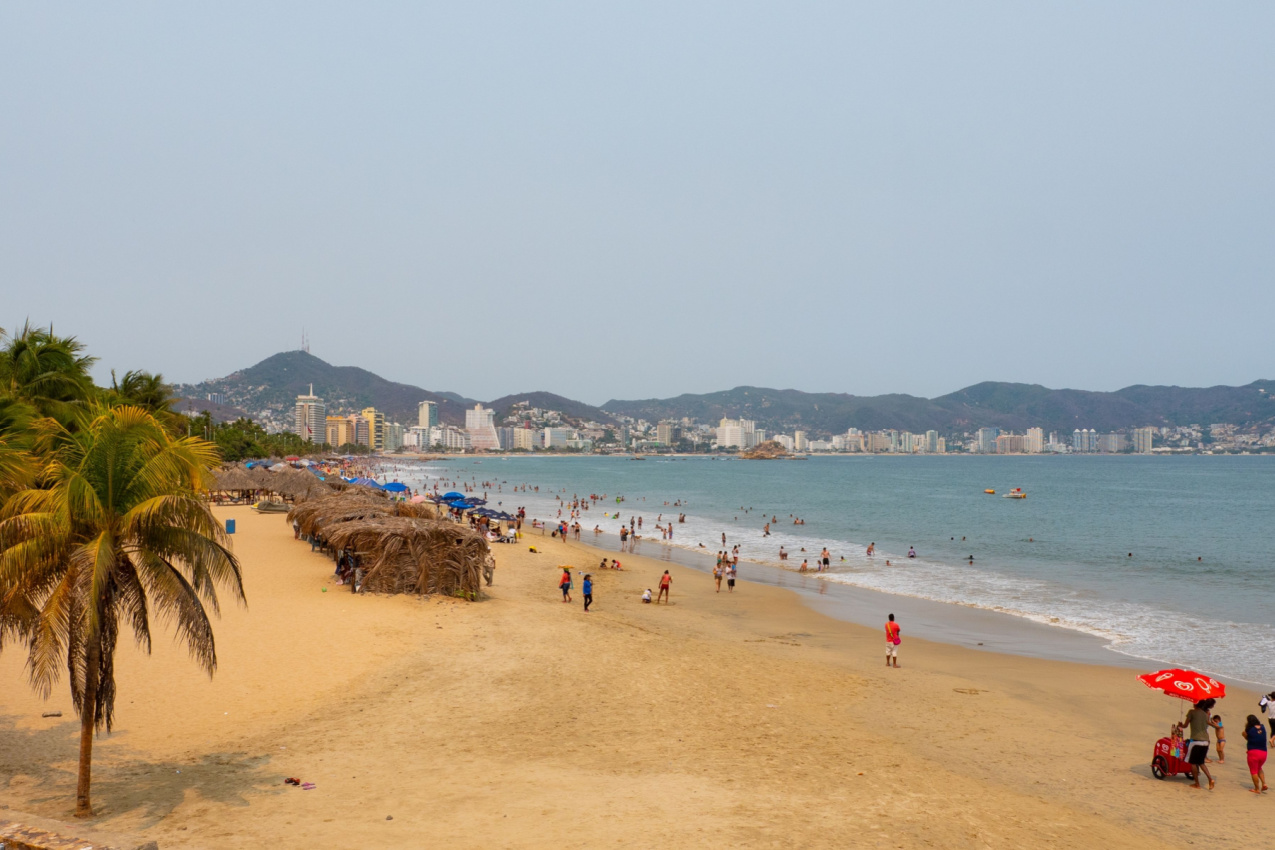
The World Health Organization (WHO) identified potentially hazardous amounts of bacteria on three beaches in Acapulco — Manzanillo, Hornos, and Suave.
The regulations specify that every 100 milliliters of beach water must have no more than 200 of the bacteria enterococcus faecalis. Results revealed that Manzanillo had 373 enterococci, Hornos 292, and Suave 241.
Common illnesses associated with polluted water and sand include nausea, skin rashes, vomiting, stomachache, diarrhea, headache or fever, and ear, eye, nose, and throat infections.
The good news is that these are Mexico’s only contaminated beaches! So if you prefer a beach holiday, there are still lots of safe and bacteria-friendly coastlines to enjoy across Mexico, including Cozumel, Cabo San Lucas, and Cancun.
Acapulco also has multi-colored flags set up on each beach to indicate how risky it is to swim out there, including:
- Black — Do not swim; deadly currents
- Red — Avoid swimming; dangerous currents
- Yellow — Semi-safe; swim with an utmost caution
- White — Dangerous marine life; swim with caution
- Green — Safe to swim
- Blue — Bacteria-free beach
When it comes to shark attacks, there have been no known reports in recent years. The last shark attack happened in 1973, leaving two people dead and two injured.
Acapulco Weather Patterns: What to Expect?
Acapulco has two main seasons: dry and wet.
The dry season in Acapulco occurs from November to May. During this period, the temperatures revolve around 78°F (26°C), with the maximum reaching 88°F (31°C). The hottest and least rainy months are November and May, with a maximum of 3 rainy days and 1 inch (25 millimeters) level of participation.
The wet season in Acapulco spans from June to October, bringing higher amounts of rainfall and increased humidity. September is the wettest month, raining for 14 days and 12.1 inches (310 millimeters) levels of participation. The temperature in the wet season is warm, with an average of 83°F (28°C), and a maximum of 89°F (31°C).
Weather Overview in Acapulco
Summer
The summer season in Acapulco begins in June and ends in August. The average daily temperature is around 83°F (28°C). On the hottest days, Acapulco reaches up to 89°F (31°C). Summer nights are pleasant, around 78°F (25°C).
Fall
Acapulco’s fall spans from September to November. The daily average temperature may reach 82°F (27°C), with a maximum high of 88°F (31°C). The temperature during the night is 75°F (24°C).
Winter
The winter season in Acapulco spans from December to February. The daily average temperature is around 78°F (26°C), with a maximum of 86°F (30°C). Winter nights hover at about 71°F (21°C).
Spring
Springtime in Acapulco is from March to May. The daily average is 78°F (26°C), while on the hottest days, Acapulco reaches up to 88°F (31°C). Spring nights are warm, hitting a maximum of 78°F (24°C).
When Is the Best Time to Visit Acapulco?
Safety-wise, there’s no good time to visit Acapulco. Weather-wise, the most enjoyable period is from December to April. This is the time of the year when there is the least chance of rain, and it is also outside of the dangerous hurricane season.
Exploring Acapulco Solo or With a Family: Is It a Good Idea?
Acapulco is not a safe place to visit alone or with children. The US government encourages travelers not to visit the nation or to leave as quickly as possible.
For travelers who are already there and wish to securely return home, the safety tips listed below will be quite useful.
Essential tips for staying safe:
- Learn fundamental Spanish words and phrases
- Get a Mexican SIM card
- Look up the nearest police station on Google Maps
- The emergency numbers are: 911 (police), 066 (ambulance), 080 (fire services)
- Never walk at night
- Never walk in secluded neighborhoods
- Never go too far from where you’re staying
- Never start a conflict
- Public transportation and ATMs are hitpoints for thieves
- Don’t wear expensive clothes, jewelry, or too much cash with you
- Never drink tap water
- Always be wary of your surroundings
- Respect the locals
- Book in trustworthy hotels with a good reputation
- Have some pesos on hand
- Keep valuables in locks or hotel safes, or hide them in different spots around your room
Tips for traveling alone:
- Maintain constant contact with a friend or family member
- Keep it “down low” and avoid going out a lot so that people don’t realize you’re alone
- If you go out, never do it at night
- Don’t make friends with strangers
- Don’t share personal information with anybody
- Dress modestly
- Avoid catcallers
- Avoid areas densely packed with clubs and bars
- Drink responsibly so that you’ll be in control of what’s going on around you
- Kindly refuse illegal substances
- Be cautious of someone putting a narcotic in your drink
- If you are threatened for your belongings, do not fight back and give them what they want
Tips for traveling with your family:
- Stay in your hotel as much as possible
- Rent a car rather than using other means of transportation
- Don’t drink and drive
- Always keep an eye on your kids
- Make sure the family is together, and never separated
- Pack a medical kit
- Go to reputable restaurants
Conclusion
This brings us to the end of our Acapulco safety guide for 2024.
Unfortunately, Acapulco continues to be one of the most dangerous places to be. Cartels are ruling everything from the underworld to the everyday life of commoners and tourists. Natural disasters tremble buildings and oceans. Beaches are contaminated with dangerous bacteria and are therefore unfit for swimming.
Acapulco was once a beautiful place where celebrities, politicians, and regular tourists flocked to experience its true magic. But Acapulco is no longer like that. We don’t think it’s a good idea to go there — choose a safer destination, and leave Acapulco for another time.
